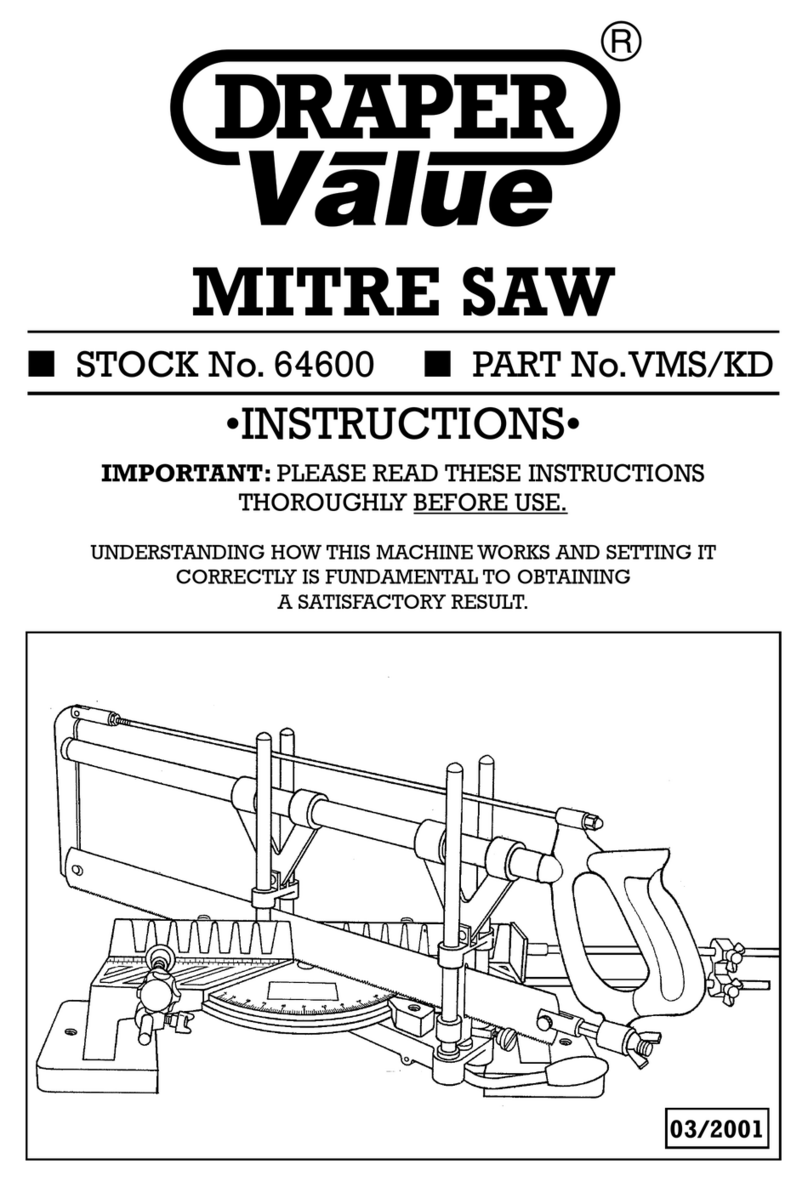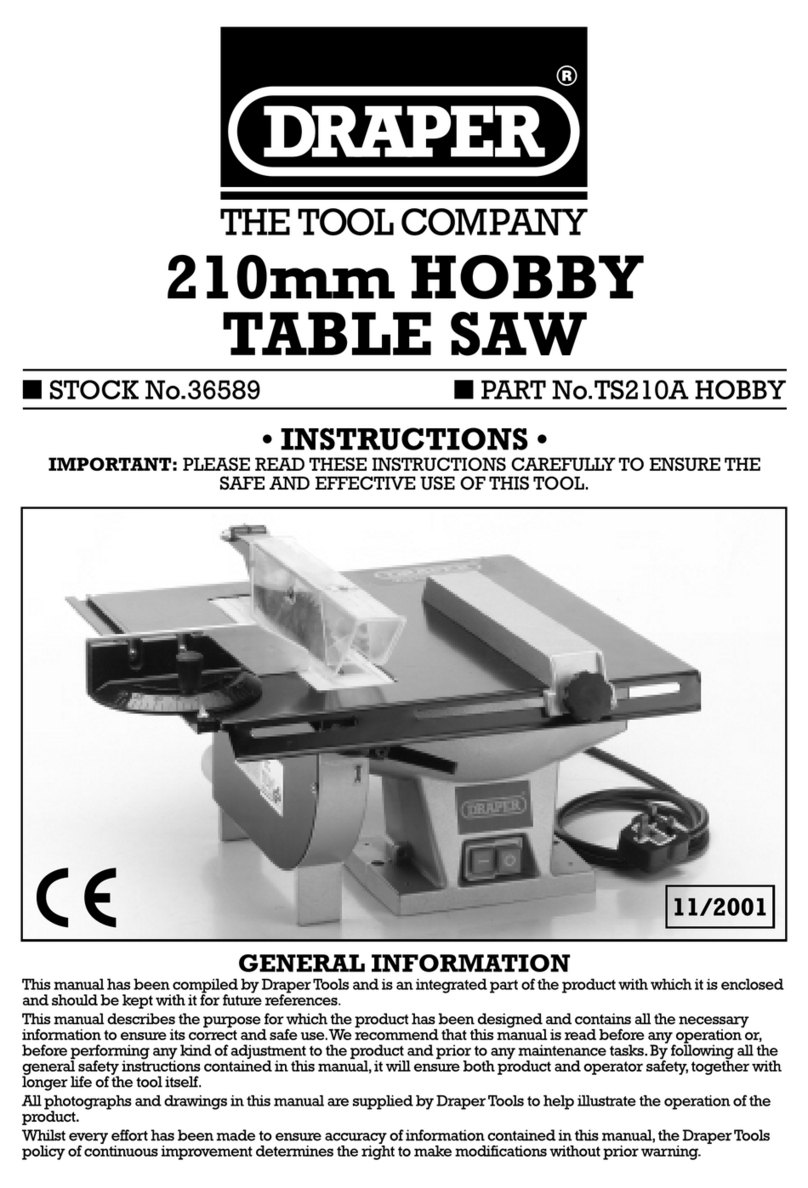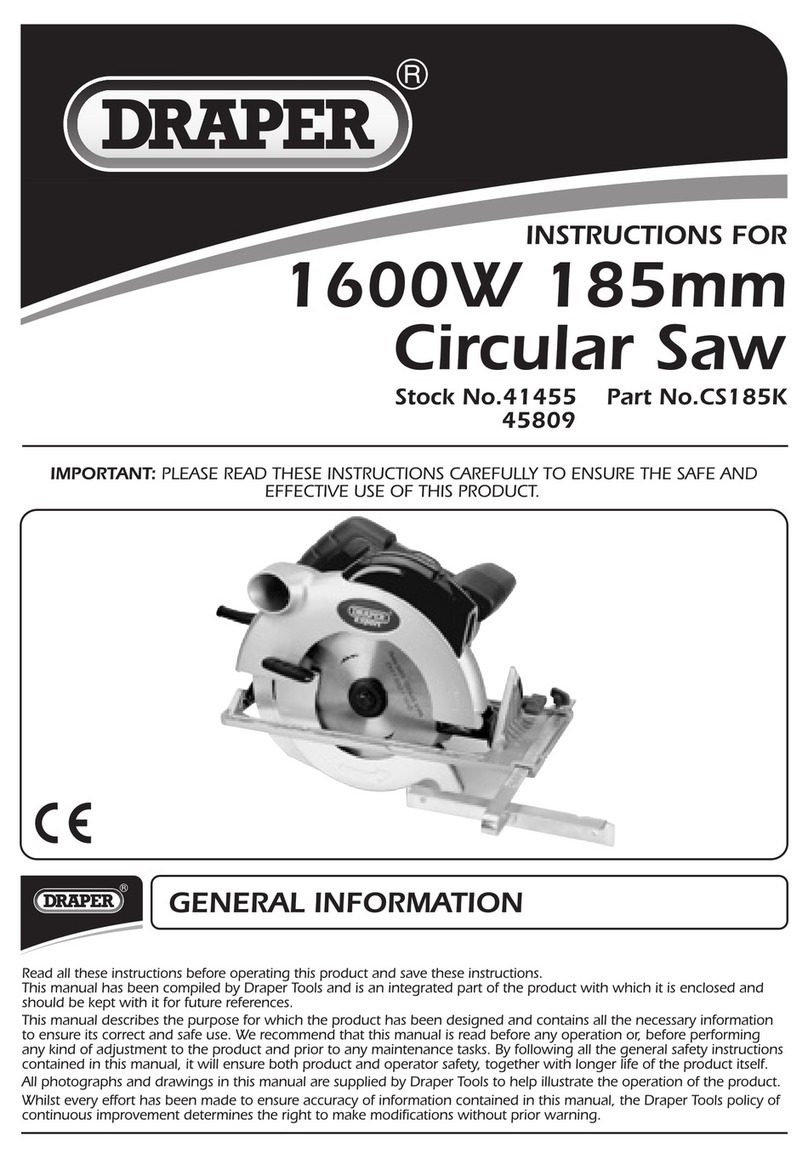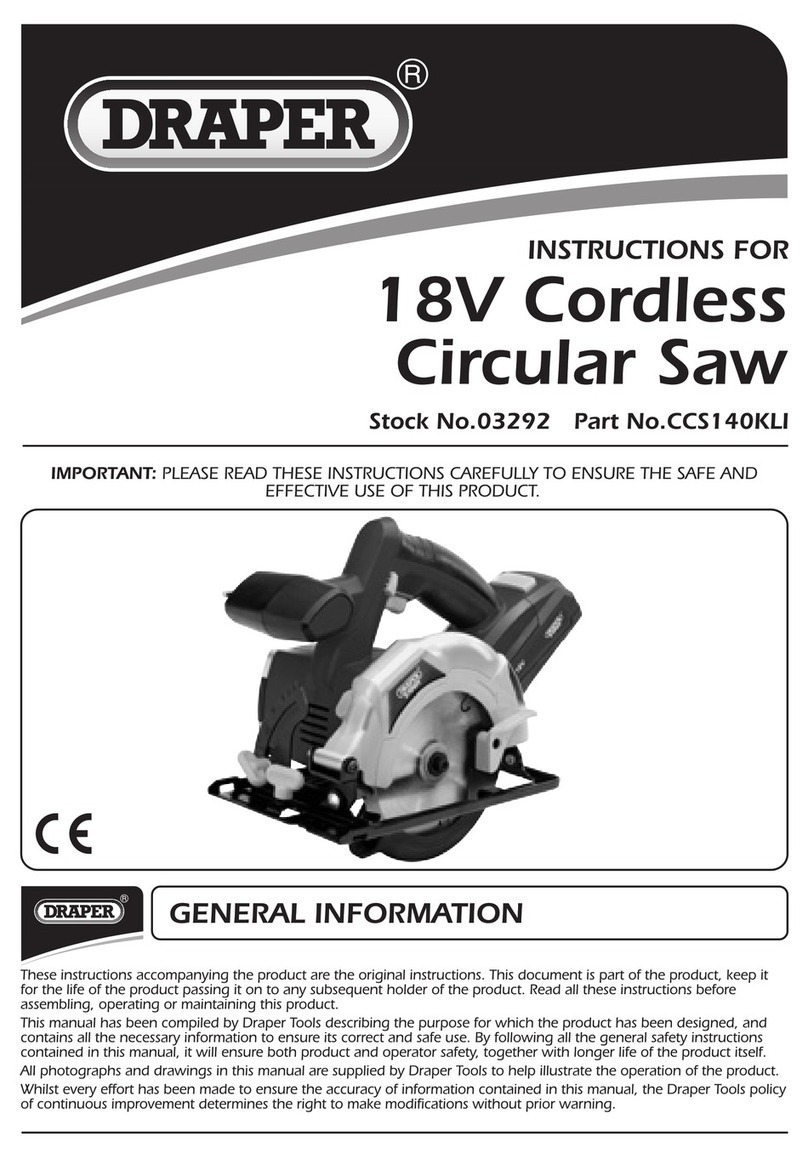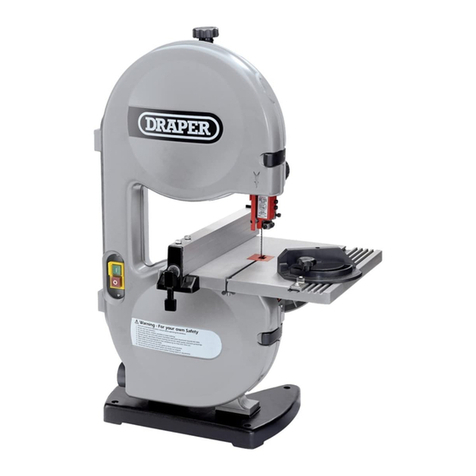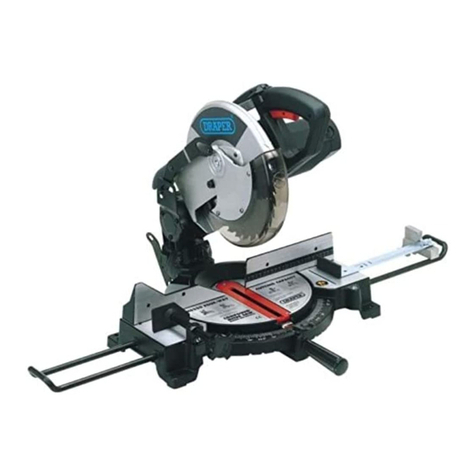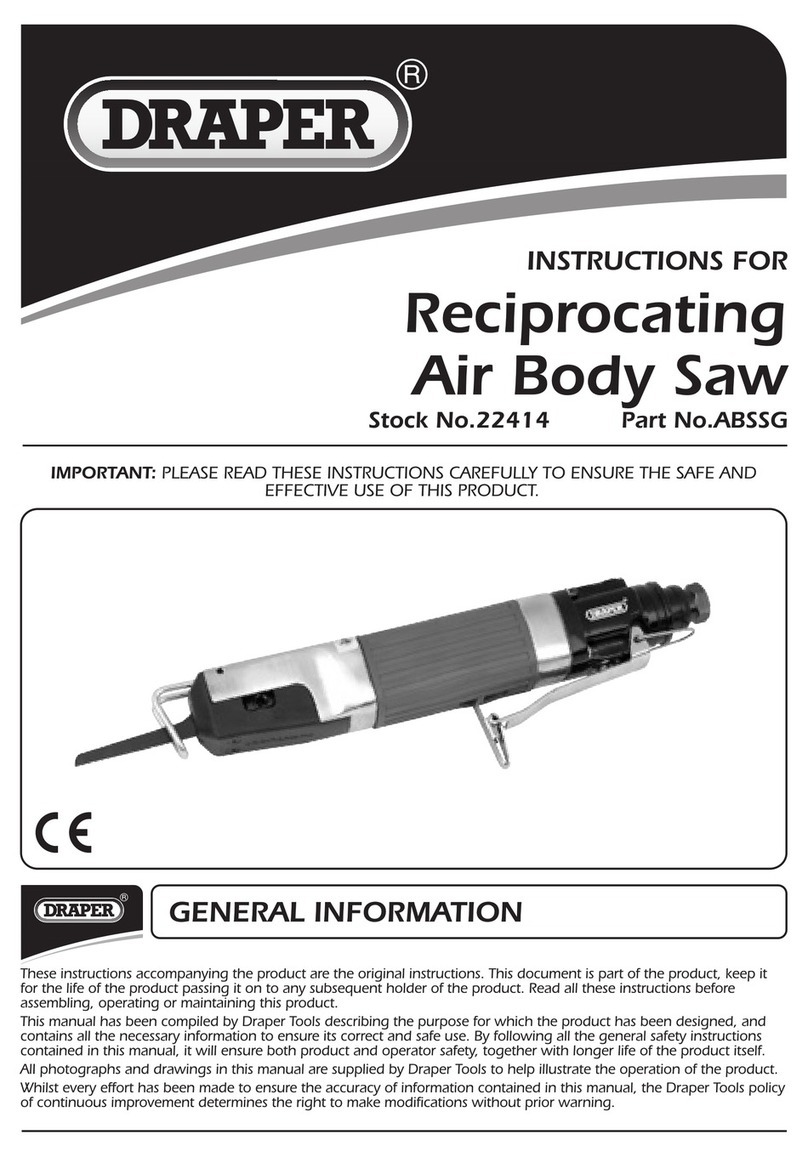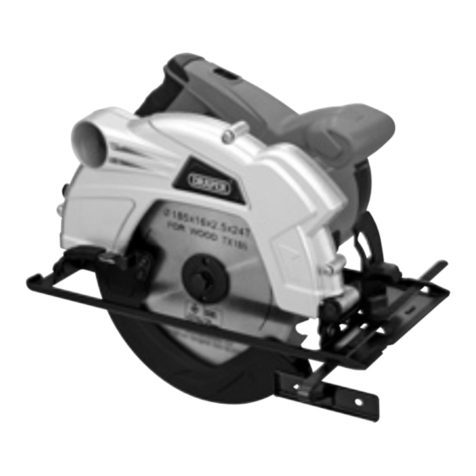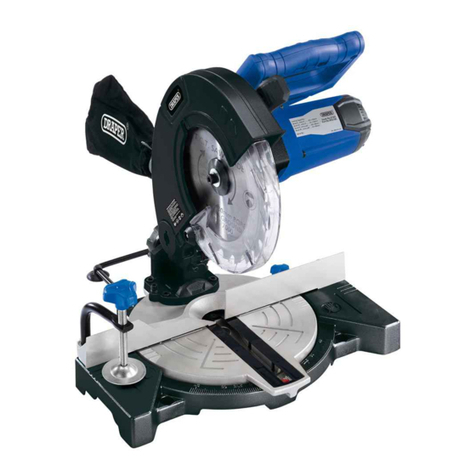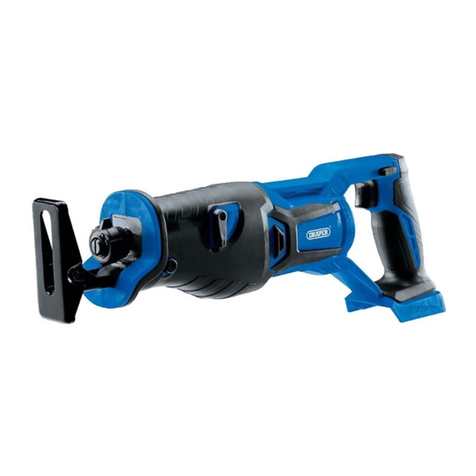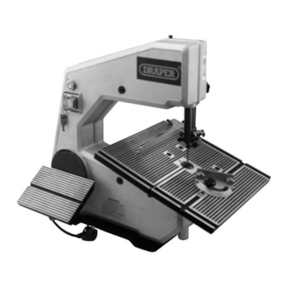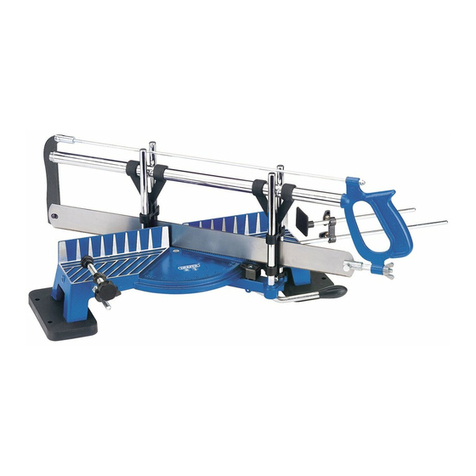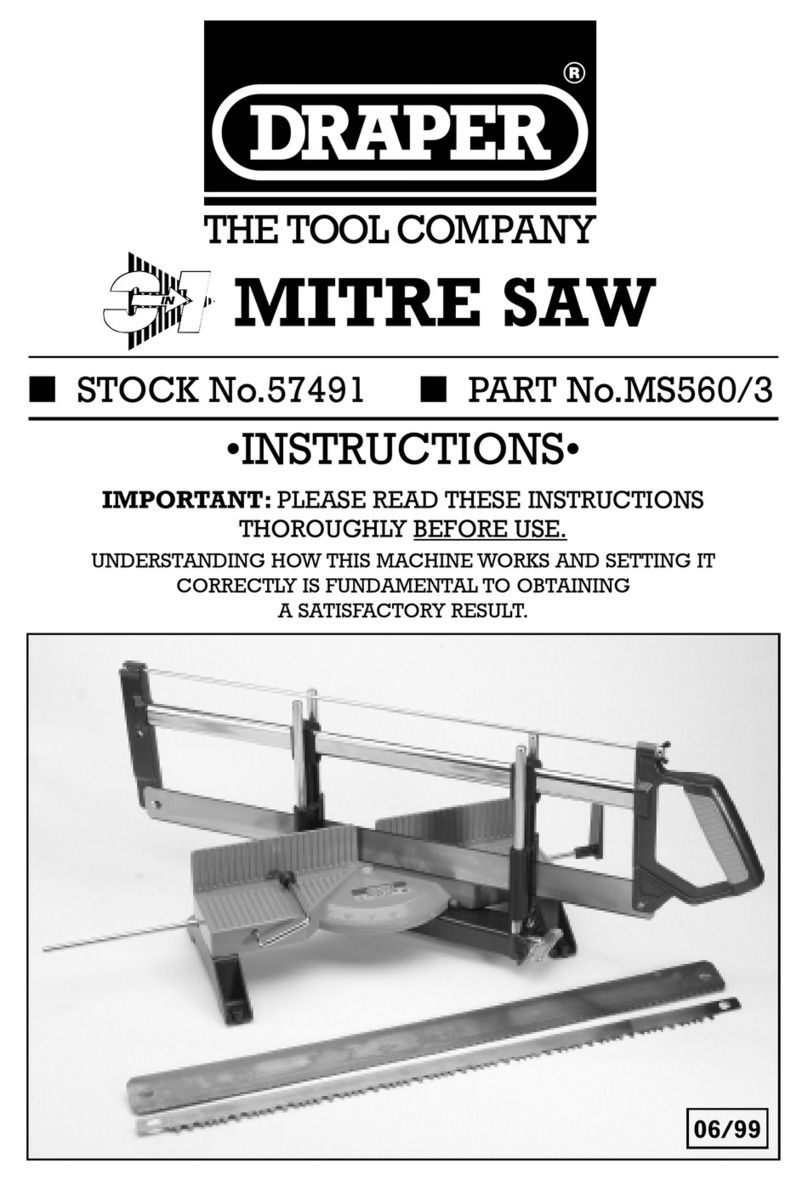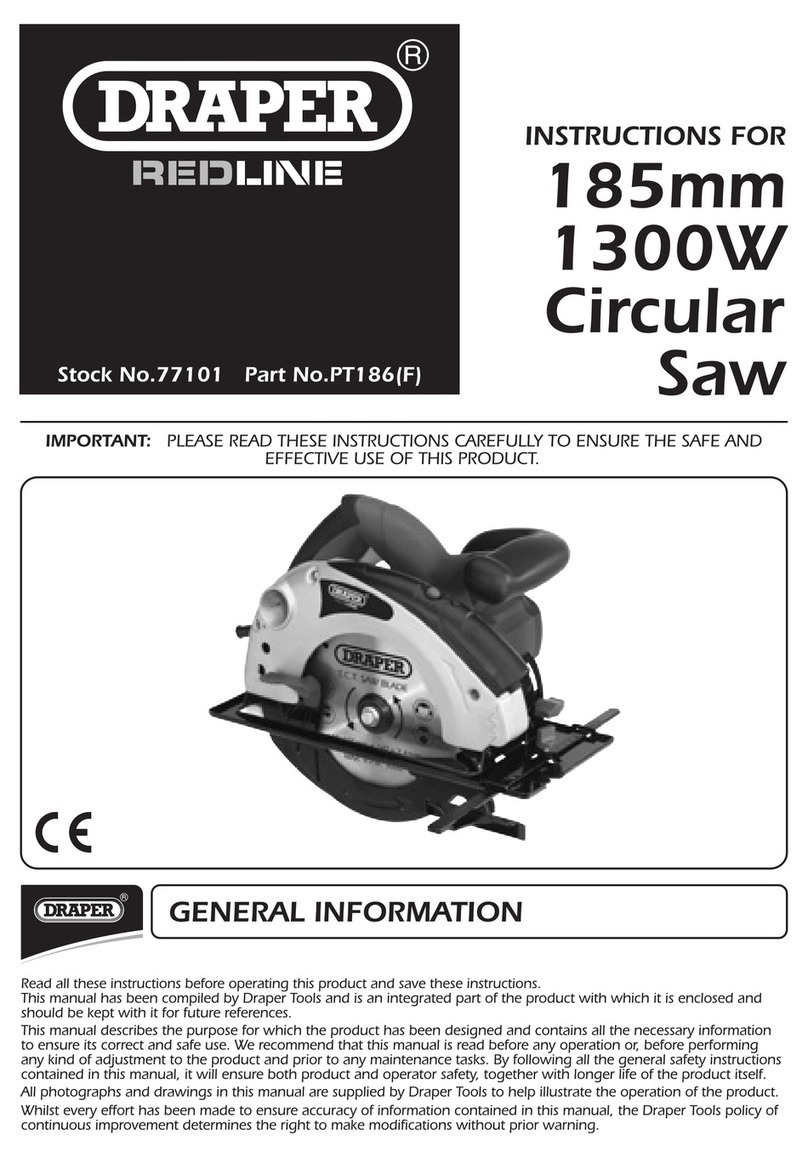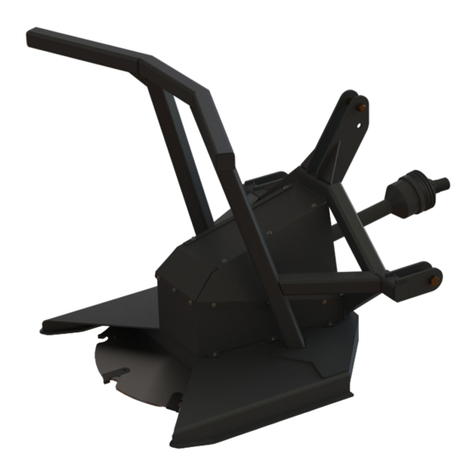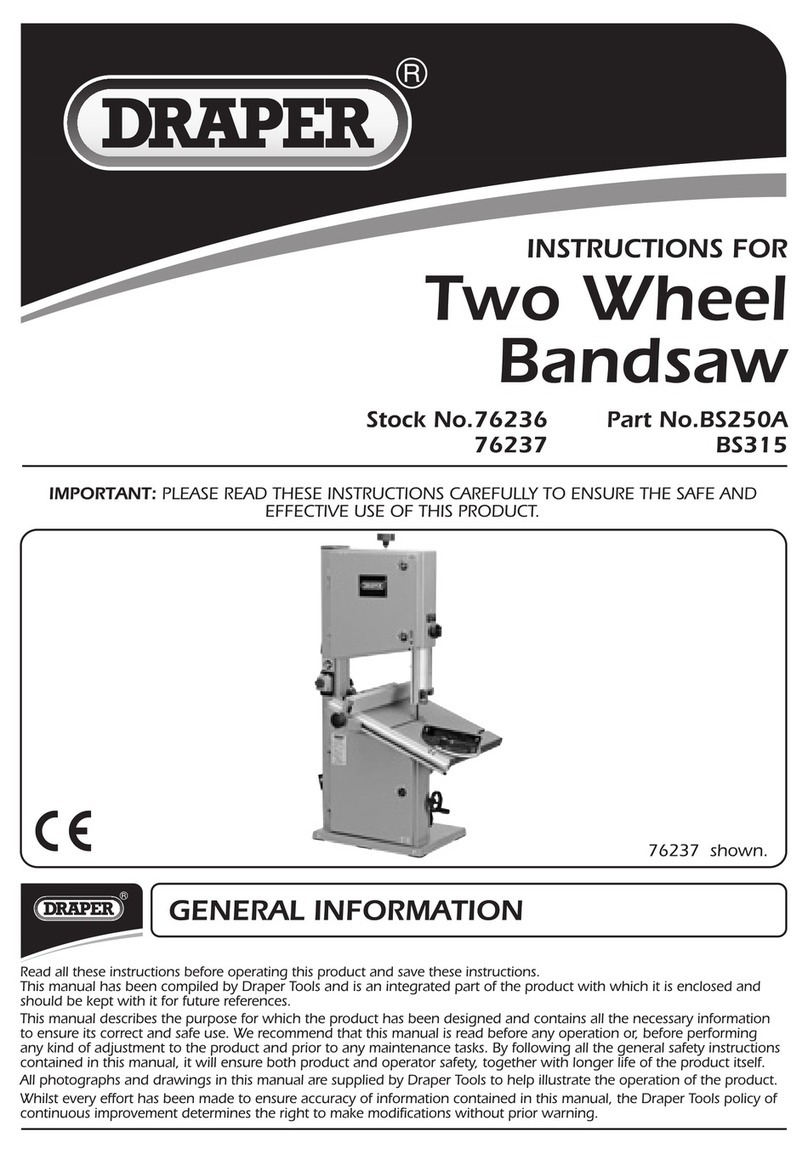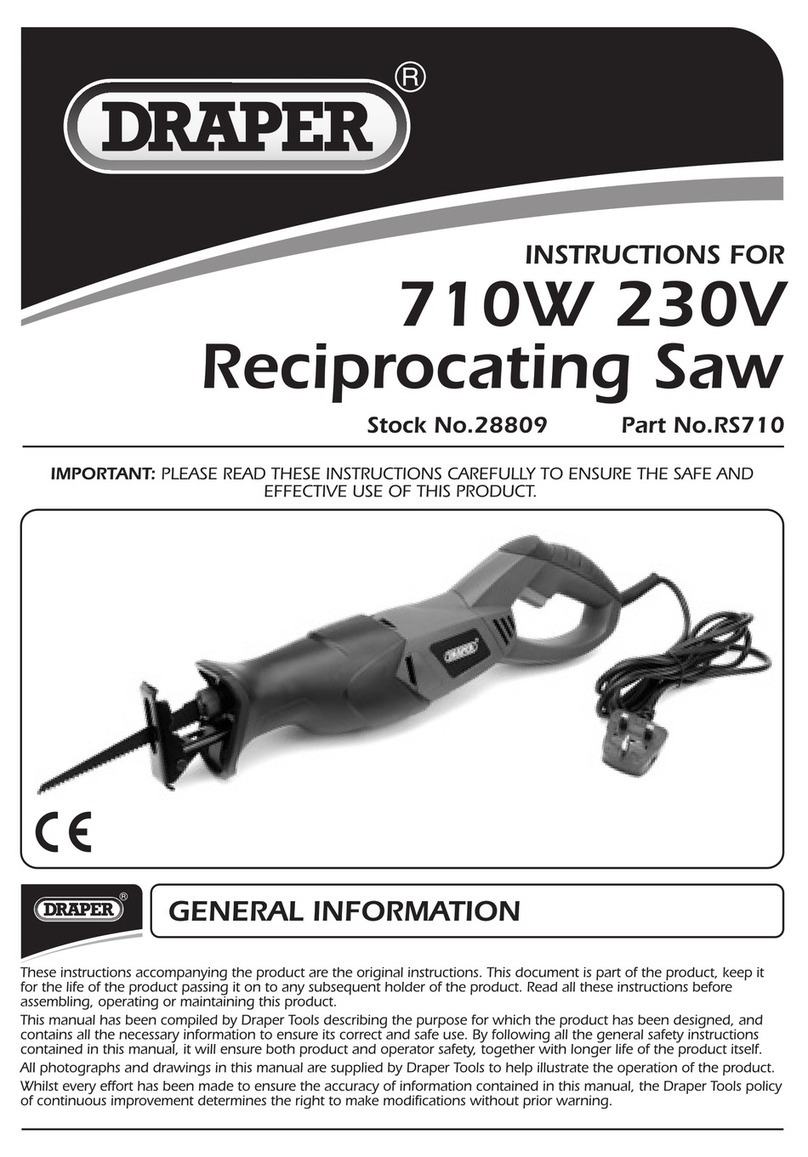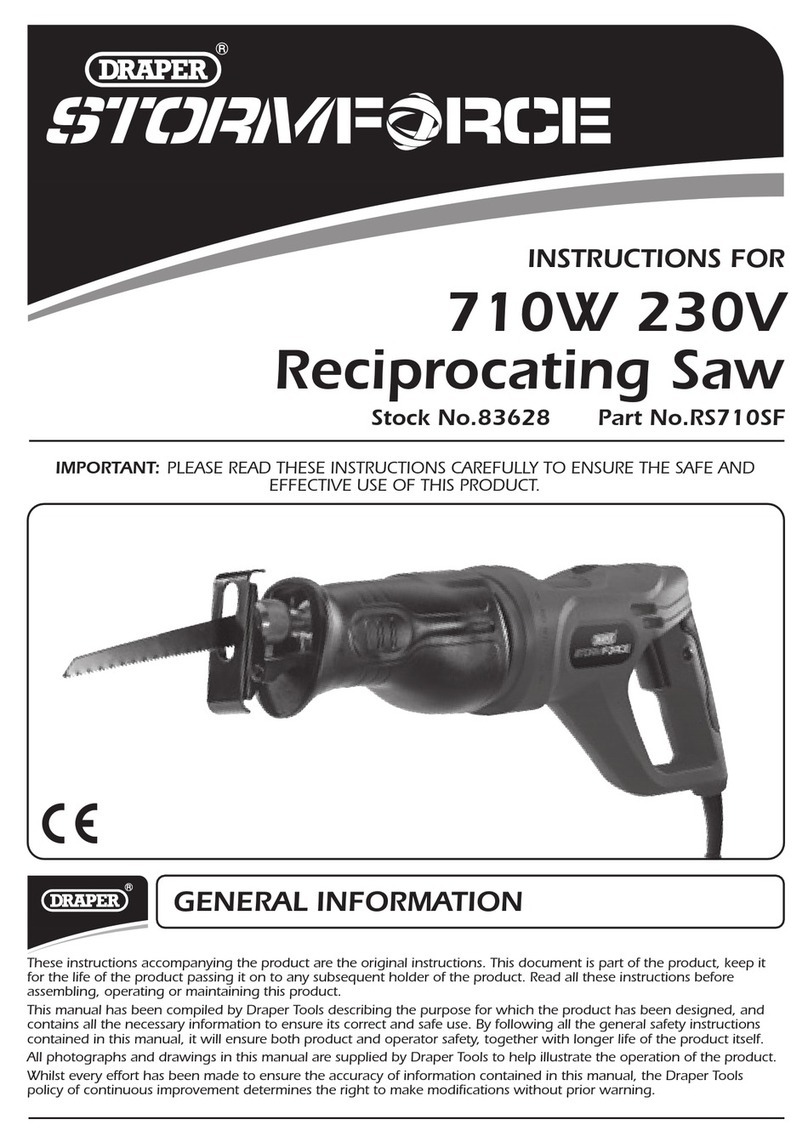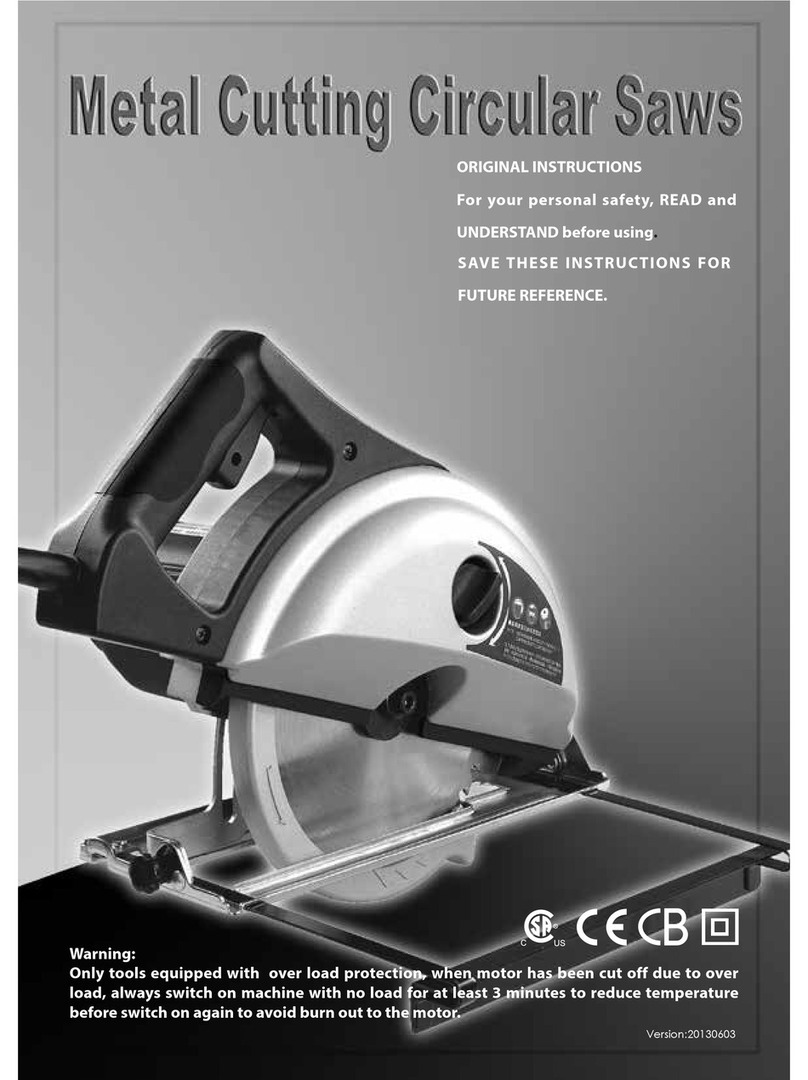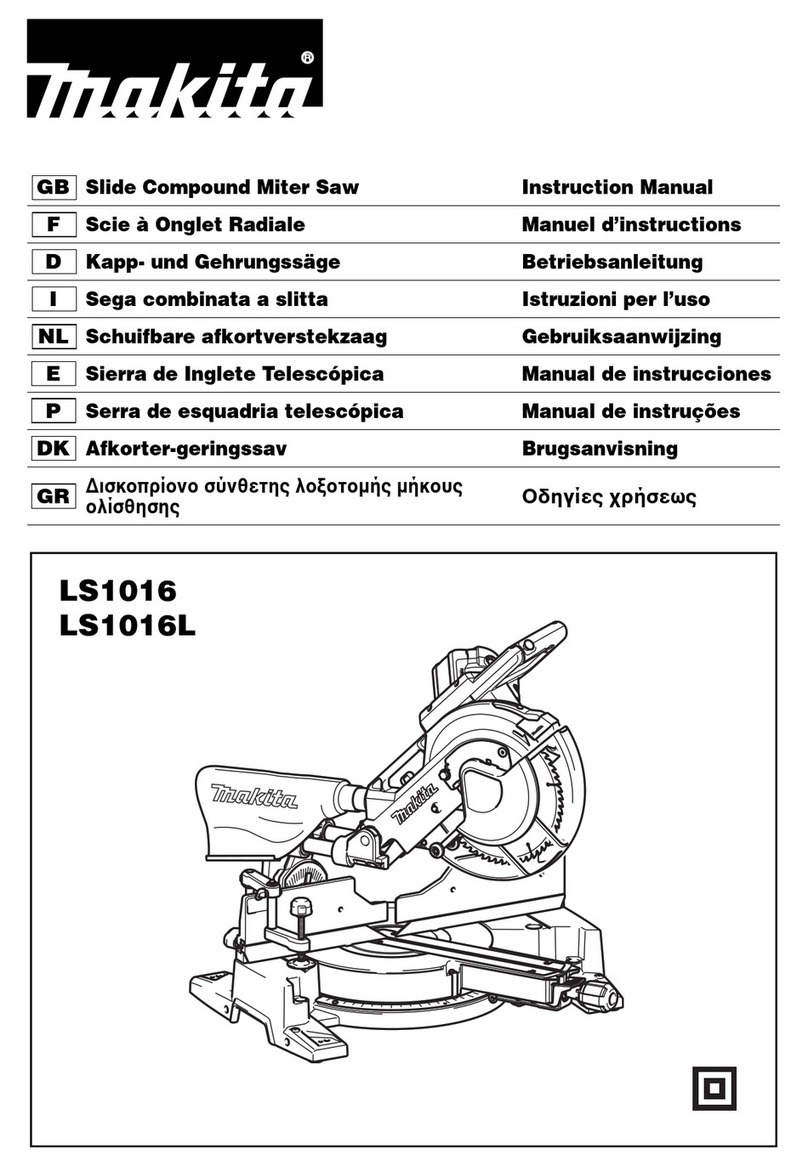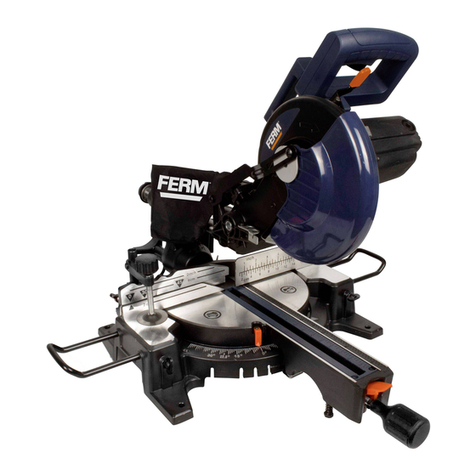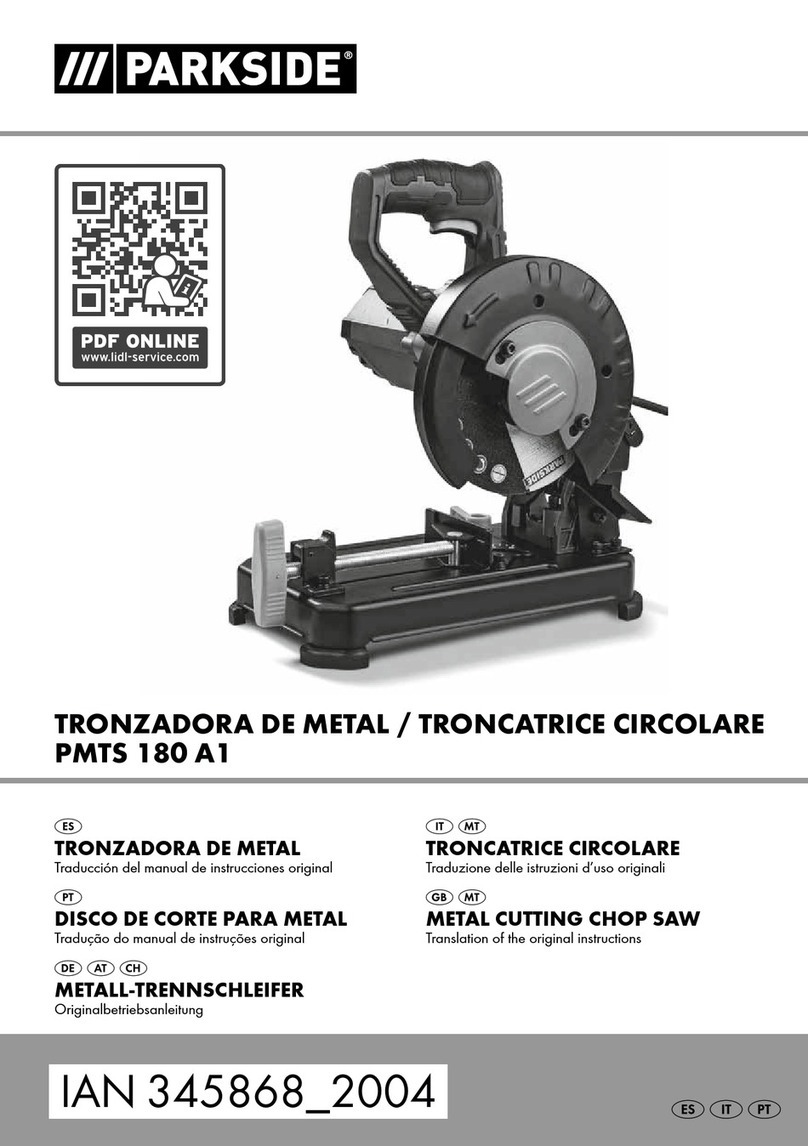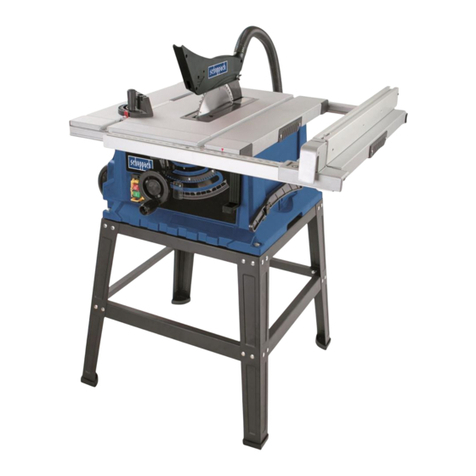GENERAL SAFETY INSTRUCTIONS
WARNING: When using electric tools basic safety
precautions should always be followed to reduce the risk of
fire, electric shock and personal injury including the
following.
Read all these instructions before attempting to operate this
product and save these instructions.
SAFE OPERATION
1. KEEP WORK AREA CLEAR
- Cluttered areas and benches invites injuries.
2. CONSIDER WORK AREA ENVIRONMENT
- Do not expose tools to rain.
- Do not use tools in damp or wet locations.
- Keep work area well lit.
- Do not use tools in the presence of flammable
liquids
or gases.
3. GUARD AGAINST ELECTRIC SHOCK
- Avoid body contact with earthed or grounded
surfaces (e.g. pipes, radiators, ranges,
refrigerators).
4. KEEP OTHER PERSONS AWAY
- Do not let persons, especially children, not
involved
in the work touch the tool or the extension cord
and
keep them away from the work area.
5. STORE IDLE TOOLS
- When not in use, tool should be stored in a dry
locked-up place, out of reach of children.
6. DO NOT FORCE THE TOOL
- It will do the job better and safer at the rate for
which it was intended.
7. USE THE RIGHT TOOL
- Do not force tools to do the job of a heavy duty
tool.
- Do not use tools for purposes not intended; for
example do not use circular saws to cut tree limbs
or
logs.
8. DRESS PROPERLY
- Do not wear loose clothing or jewellery, they can
be
caught in moving parts.
- Non-skid footwear is recommended when
working
outdoors.
- Wear protective hair covering to contain long
hair.
9. USE PROTECTIVE EQUIPMENT
- Use safety glasses.
- Use face or dust mask if working operations
create
dust.
10. CONNECT DUST EXTRACTION EQUIPMENT
- If the tool is provided for the connection of dust
extraction and collecting equipment, ensure
these
are connected and properly used.
11. DO NOT ABUSE THE CORD
- Never yank the cord to disconnect it from the
socket.
Keep the cord away from heat, oil and sharp
edges.
12. SECURE WORK
- Where possible use clamps or a vice to hold the
work. It is safer than using your hand.
13. DO NOT OVERREACH
- Keep proper footing and balance at all times.
14. MAINTAIN TOOLS WITH CARE
- Keep cutting tools sharp and clean for better and
safer performance.
- Follow instruction for lubricating and changing
accessories.
- Inspect tool cords periodically and if damaged
have
them repaired by an authorized service facility.
- Inspect extension cords periodically and replace if
damaged.
- Keep handles dry, clean and free from oil and
grease.
15. DISCONNECT TOOLS
- When not in use, before servicing and when
changing accessories such as blades, bits and
cutters,
disconnect tools from the power supply.
16. REMOVE ADJUSTING KEYS AND WRENCHES
- Form the habit of checking to see that keys and
adjusting wrenches are removed from the tool
before
turning it on.
17. AVOID UNINTENTIONAL STARTING
- Ensure switch is in “off” position when plugging
in.
18. USE OUTDOOR EXTENSION LEADS
- When the tool is used outdoors, use only
extension
cords intended for outdoor use and so marked.
19. STAY ALERT
- Watch what you are doing, use common sense
and
do not operate the tool when you are tired.
20. CHECK DAMAGED PARTS
- Before further use of tool, it should be carefully
checked to determine that it will operate properly
and perform its intended function.
- Check for alignment of moving parts, binding of
moving parts, breakage of parts, mounting and
any
other conditions that may affect its operation.
- A guard or other part that is damaged should be
properly repaired or replaced by an authorized
service centre unless otherwise indicated in this
instruction manual.
- Have defective switches replaced by an




















